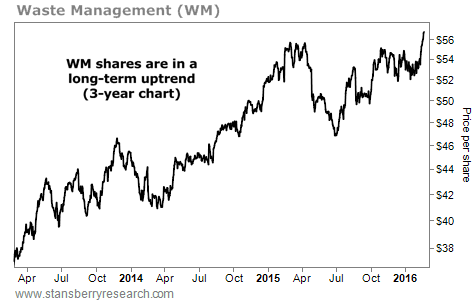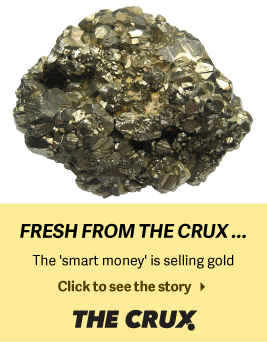| Home | About Us | Resources | Archive | Free Reports | Market Window |
The Bear Market You May Have MissedBy
Wednesday, February 24, 2016
Here's a test even a novice investor can pass...
Hand him a chart that shows the performance of the stock market over the last 100 years and ask him to point out the best buying opportunities.
He will invariably point to the low spots, the biggest dips, the bear market bottoms.
You don't have to be a sophisticated investor or a Wall Street fat cat to recognize three crucial points:
If you buy at some point in a bear market, even if you are a bit early, you are almost certainly doing the right thing from a long-term perspective. After all, the average bear market lasts only 15 months. Of course, not every selloff is a bear market, which is defined as a 20% decline from the top. Both the Dow and the S&P 500 have "corrected" – i.e. dropped more than 10% from recent highs – but neither has technically reached bear market territory.
So many investors believe it is "too early" to buy. But they could be wrong...
Today, we live in a global economy, where national economies and financial markets are increasingly interconnected. How could it be otherwise? Different countries have different advantages.
Some have enormous natural resources. Others have cheap currencies or inexpensive labor. Some have large, navigable rivers or strategically placed deepwater ports. Others have enormous manufacturing hubs. Some are industrial powerhouses. Others excel at technology or biopharma. Most have some combination of these attributes.
That means it pays to look at the world as a whole. And this is increasingly true when it comes to investing in the stock market.
Yes, the Dow and the S&P 500 have not declined 20% or more. But many other markets have, including China, Japan, and Britain. Earlier this month, 35 out of 45 major country stock indexes had fallen more than 20%.
Also earlier this month, "the world market" itself – the Vanguard Total World Stock Fund (VT) – had declined 20% from recent highs.
Many sectors of those world markets – like emerging markets – have really been hammered. As I write, for example, the iShares MSCI Emerging Markets Index Fund (EEM) is down more than 30% from its high five years ago. Likewise, the iShares US Energy Fund (IYE) – an index of U.S. oil and gas stocks – is down around 30% from its 52-week high.
If you're not at least nibbling at these assets, it's tough to call yourself a real contrarian.
In the U.S., small-cap stocks entered bear market territory earlier this year. The iShares Russell 2000 Index Fund (IWM) is still down 10% year-to-date.
It is not unusual for small-caps to underperform large-caps late in a bull market. Or early in a bear market, depending on how you look at it.
Plenty of large-cap stocks are on sale, too. One of the reasons the two leading large-cap indexes aren't down 20% is that they are market-cap weighted, and many of the biggest companies – like McDonald's (MCD), AT&T (T), and Alphabet (GOOG) – have held up the best.
It's true that valuations haven't hit the levels generally seen at bear market bottoms. For example, the S&P 500 now sells for 17 times earnings, down from 18 at the end of last year.
But as I pointed out earlier, bear market bottoms can be identified only in hindsight. And in an era of ultra-low inflation, ultra-low interest rates, and ultra-low energy prices, valuations may not get a whole lot cheaper.
In sum, markets can always fall further – and they may still. But many stocks have been beaten up more than "the market."
And it's never a bad idea to hedge your bets.
So even if you think the bottom is still ahead, it wouldn't hurt to pick among the rubble to find some bargains rather than just sitting on your hands in hope of buying when stocks get a lot cheaper.
They may not.
Good investing,
Alexander Green
Further Reading:
Last month, Alexander explained how you can't act on emotions and expect to prosper in the stock market. "Panicking is for when a toddler in your charge suddenly darts into the street," he says. "It has no place in portfolio management." Learn what he says the key to long-term investment success is right here.
Yesterday, Steve showed readers a trade to consider making today. It's not far from being the perfect setup he looks for. To learn more about this "bad to less bad" opportunity, click here: A Perfect Setup: Hard to Find These Days, but This One Is Close.
Market NotesTHE UPTREND CONTINUES FOR THIS GARBAGE GIANT Today, we turn our attention to another one of the market's hidden gems in 2016...
Regular readers know we're fans of simple businesses that provide the types of services that will always be in demand. More often than not, these are "boring" businesses that don't dominate the financial headlines. One example, as we shared last month, is the public-storage sector. As we showed you, selling empty space works. Another simple business that is working right now is trash removal...
Waste Management (WM) is a $25 billion company and a staple in the waste disposal and recycling industry. Collecting garbage isn't a topic you'll overhear folks talking about at cocktail parties... but it has been a winning trade in 2016. The company provides services in an industry that will never go away. According to the Environmental Protection Agency, Americans generate hundreds of millions of tons of trash every year.
As you can see from the chart below, WM shares have been in a solid uptrend since July, rising more than 20%. They're up nearly 40% over the last two years. And the stock continues to chug along this year while the broad market has suffered. It may not be "sexy," but it works...
 |
Recent Articles
|



